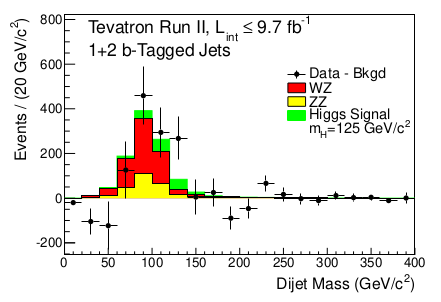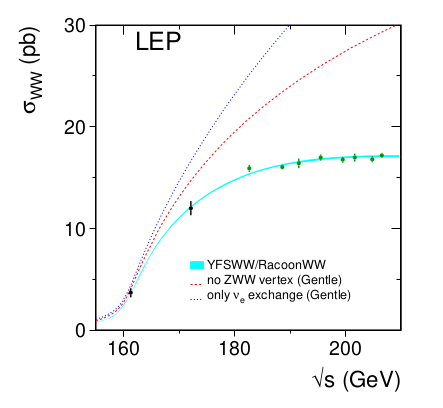I've previously worked on a number of different projects:
Development of detectors for linear collider experiments.
[2017-present] IPNS, KEK (Japan)
[2012-2016] The University of Tokyo (Japan)
[2008-2012] LLR, Ecole polytechnique (France)
[2006-2008] Kobe University (Japan)
I'm working on the development of state-of-the art detector systems which will allow us to make high-precision measurements of
elementary particle physics at the next generation of colliders. See here for more details.
CDF experiment at the Tevatron collider, Fermilab
Reconstruction algorithms and data analysis (principally involving b-tagging)
[2002-2006] INFN Roma (Italy)
The identification of b-jets (produced when b-quarks are created in particle collisions), is a crucial ingredient to
the search for top-quarks (the heaviest fundamental particle we have so far discovered) and Higgs bosons, which both prefer to
decay into b-quarks.
The identification of b-jets relies on the relatively long lifetime of the b-quark (or rather the hadrons which contain it),
and it's relatively large mass. B-hadrons typically travel a few mm before decaying into other particles, and have a mass of
around 5 GeV/c^2 (or about 0.00000000000000000000001 g: this is what we call "relatively heavy"!).
I developed a fancy way to find such b-jets in the data collected by the CDF experiment in a more efficient way.
This contributed, for example, to the observation of the Higgs boson in collisions produced at the Tevatron collider.
In the following plot, we can see the invariant mass of pairs of jets, at least one of which is identified as a
b-jet, which are produced in association with a W or Z boson. The small green contribution is that expected for a Higgs boson,
while the red and yellow are contributions from WZ and ZZ production. The measured data (black points) are somewhat higher than the
sum of the WZ and ZZ predictions, indicating that an additional process, due to Higgs boson production, has contributed to these events.

From arXiv:1207.6436, Phys. Rev. Lett. 109, 071804 (2012)
The evidence in this plot is not strong enough to have discovered the Higgs boson, which was done by the ATLAS and CMS experiments
at the Large Hadron Collider, using a different detection technique.
My current research on calorimeters aims to improve the precision with which we can measure the invariant masses of jet-pairs.
The above plot shows the invariant masses of jets from WZ, ZZ, and Higgs events: you will have noticed that they tend to overlap,
so it is difficult to say which process (red, yellow, or green) has produced the extra events seen in the data.
An improved detector, such as the one I am now developing, would allow these different contributions to be much more clearly
separated, allowing us to make a more precise measurement of the number of produced Higgs events,
with less reliance on theoretical predictions.
The above plot also has a link to my previous research at the DELPHI experiment,
in which I measured the production rate of pairs of W bosons,
and validated the theoretical model which descibes their interactions.
DELPHI experiment at the LEP collider, CERN
Measurement of W-boson properties
[1998-2002] University of Oxford (UK) [D.Phil]
My work contributed to this picture, which tells us how often pairs of W bosons were produced (vertical axis) when
electrons and positrons were collided at different energies (horizontal axis):

Figure from: arXiv:1302.3415, Phys.Rept. 532 (2013) 119-244
As you can see, the measurements (black and green points) agree well with the prediction of the
Standard Model (light blue/cyan curve), in which the W boson interacts with the Z boson, the photon, and with quarks and leptons.
The measurements do not agree with two alternative models in which the W boson does not interact with the Z (red curve),
or with neither the Z nor the photon (blue curve).

